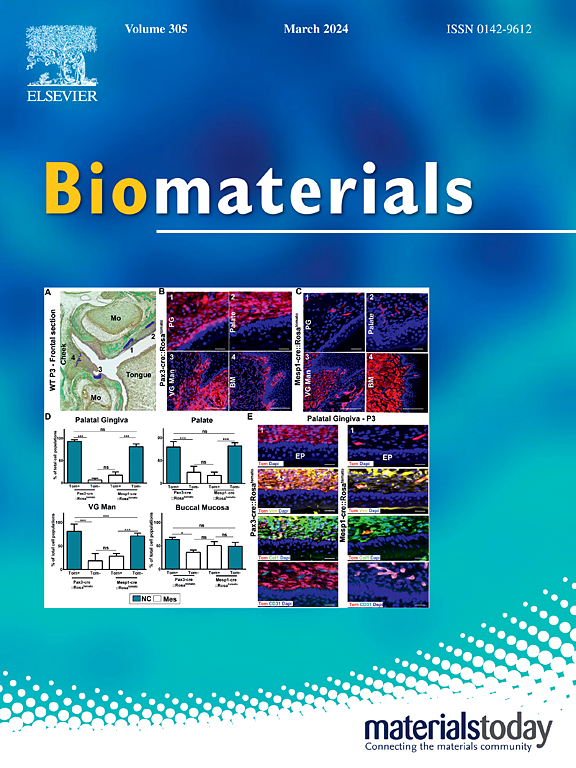Ultrasonic disruption of circulating amyloid β aggregates via phase-change peptide nanoemulsions
IF 12.8
1区 医学
Q1 ENGINEERING, BIOMEDICAL
引用次数: 0
Abstract
Amyloid β (Aβ) assemblies exist not only in the central nervous system, but can circulate within the bloodstream to trigger and exacerbate peripheral, cerebrovascular, and neurodegenerative disorders. Eliminating excess peripheral Aβ fibrils, therefore, holds promise to improve the management of amyloid-related diseases. Here, we present nanoemulsion-mediated ultrasonic ablation of circulating Aβ fibrils to both destroy established plaques and prevent the re-growth of ablated fragments back into toxic species. This approach is made possible using a de novo designed peptide emulsifier that contains the self-associating sequence from the amyloid precursor protein. Emulsification of the peptide surfactant with fluorous nanodroplets produces contrast agents that rapidly adsorb Aβ assemblies and allows their ultrasound-controlled destruction via acoustic cavitation. Vessel-mimetic flow experiments demonstrate that nanoemulsion-assisted Aβ disruption can be achieved in circulation using clinical diagnostic ultrasound transducers. Additional cell-based assays confirm the ablated fragments are less toxic to neuronal and glial cells compared to mature fibrils, and can be rapidly phagocytosed by both peripheral and brain macrophages. These results highlight the potential of nanoemulsion contrast agents to deliver new imaging enabled strategies for non-invasive management of Aβ-related diseases using traditional diagnostic ultrasound modalities.
求助全文
约1分钟内获得全文
求助全文
来源期刊

Biomaterials
工程技术-材料科学:生物材料
CiteScore
26.00
自引率
2.90%
发文量
565
审稿时长
46 days
期刊介绍:
Biomaterials is an international journal covering the science and clinical application of biomaterials. A biomaterial is now defined as a substance that has been engineered to take a form which, alone or as part of a complex system, is used to direct, by control of interactions with components of living systems, the course of any therapeutic or diagnostic procedure. It is the aim of the journal to provide a peer-reviewed forum for the publication of original papers and authoritative review and opinion papers dealing with the most important issues facing the use of biomaterials in clinical practice. The scope of the journal covers the wide range of physical, biological and chemical sciences that underpin the design of biomaterials and the clinical disciplines in which they are used. These sciences include polymer synthesis and characterization, drug and gene vector design, the biology of the host response, immunology and toxicology and self assembly at the nanoscale. Clinical applications include the therapies of medical technology and regenerative medicine in all clinical disciplines, and diagnostic systems that reply on innovative contrast and sensing agents. The journal is relevant to areas such as cancer diagnosis and therapy, implantable devices, drug delivery systems, gene vectors, bionanotechnology and tissue engineering.
 求助内容:
求助内容: 应助结果提醒方式:
应助结果提醒方式:


